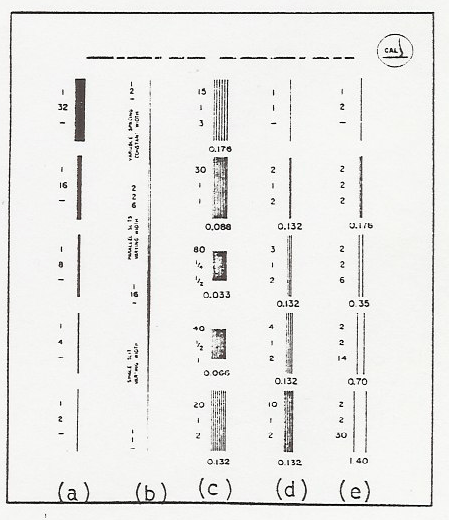20. Laser Diffraction and Interference
A laser beam is arranged to pass through the slits and be reflected onto the overhead screen. Standard demonstrations are single slit diffraction, double slit interference, and diffraction from a circular opening. Two lasers are arranged so that single and multiple slits can be shown simultaneously, one pattern above the other.
We have precision slits etched in metal foil. The slit widths and spacings are marked. The most useful single and double slits have a width of .04 mm. The double slit spacings are .125, .250, and .5 mm. There is also 3, 4, and 5 slits with the same width (0.04 mm) and spacings of .125 mm.
Hair, CD's and DVD's can be used as diffraction gratings. Simple measurements of the first maximum gives the track spacing. Comparing the pattern from CD's and DVD's gives the ratio of the track spacing for the higher density DVD.
The diffration pattern can be observed with both a red and a green laser simultaneously to show the effect of wavelength. The red laser wavelength is 0.6328 micron and the green laser is 0.532 micron
The Cornell plate, diagrammed below can also be used for these demonstrations. It is clipped to a special stand so that successive slits in each column can be brought into the laser beam by adjusting a rack and pinion knob.
Column (a) Successively narrower single slits
Column (e) Successively wider double slits
Column (b) Single slit starts narrow, becomes wider,
becomes double slit, becomes narrower.Column (d) Go from one slit to two slits to three to four to ten to show sharpening
of the fringe maxima.

The Cornell plate was originally designed to be used (and can still be used) with the individual eye to view a straight filament bulb.
